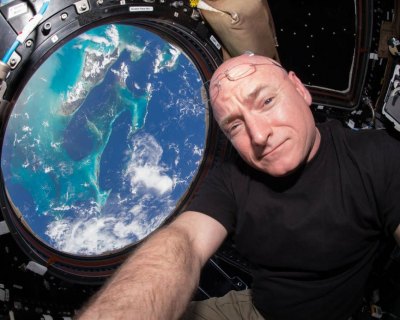In Brief: U.S. astronaut sets record

On Oct. 16, Kelly celebrated 383 days of living in space, surpassing U.S. astronaut Mike Fincke, who had 382 cumulative days.
The records are important, according to NASA. Kelly and Russian cosmonaut Mikhail Kornienko are spending a year in space as researchers attempt to measure the impact of long-term space flight on humans.
Another space station commander, Gennady Padalka of Russia, returned to Earth Sept. 11. During several space missions, Padalka has logged an astounding 879 days living and working in space, according to NASA.
ALIENS OR NATURAL PHENOMENON? Scientists recently made news not by explaining a stellar phenomenon, but by admitting that they are unsure how to explain it.
The background: The Kepler space telescope, launched in 2009, was tasked with finding Earthlike planets around other stars. Researchers, along with citizen scientists, are still looking at the data, and to date they’ve found more than 1,000 planets. They do this by looking for “dips” in light that occur when a planet passes or transits in front of a star.
The excitement is over a star designated KIC 8462852, some 1,500 light-years away from Earth. The “dips” in light at that star are substantial, according to a paper written by T. S. Boyajian, a post-doctoral fellow at Yale University, with the help of fellow researchers and citizen scientists. And headlines screamed that this could be it – the discovery of an alien structure near the star. But it also could be a natural phenomenon.
“Our most promising theory invokes a family of exocomets,” the authors wrote. “One way we imagine such a barrage of comets could be triggered is by the passage of a field star through the system. And, in fact ... there is a small star nearby.”
To be sure, researchers from the Search for Extraterrestrial Intelligence Institute (SETI) in California are examining the star with their Allen Telescope Array (ATA), according to Space.com.
Related:
NASA marks verification of 1,000th planet
Planet in habitable zone orbits sunlike star
What will we learn from a year in space?
If you would like to comment, give us a shout, or like us on Facebook and tell us what you think.

